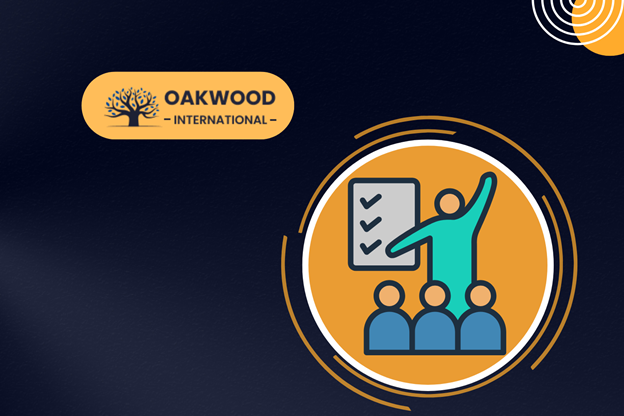Having top talent in a competitive job market is more challenging than ever. Companies are competing for skilled employees and trying to keep them engaged and committed. The key to increasing retention lies in implementing effective employee development strategies. Organisations can boost loyalty and enhance job satisfaction by focusing on growth opportunities. Managers also play an important role in providing the right skills to support employee growth.
Through HR Leadership Courses, managers gain the skills needed to design impactful development plans, ensuring a well-structured Employee Development Plan that benefits both individuals and the organisation. Let’s explore five employee development strategies to boost retention and create a thriving workforce.
Table of Contents
- Offer Continuous Learning and Development Opportunities
- Encourage Career Advancement Through Clear Pathways
- Foster a Culture of Recognition and Appreciation
- Provide Flexibility and Work-Life Balance
- Develop Strong Relationships Through Effective Communication
- Conclusion
- Offer Continuous Learning and Development Opportunities
Employees want to learn and grow, and one of the best ways to keep them interested in ongoing training. Giving employees access to HR leadership courses or industry-specific training courses will enable them to keep updated with trends and improve their abilities. Employees who view their business as committed to their professional development are likelier to feel appreciated and stay with the company over the long run. Constant learning also improves job performance, benefiting the company and the person.
Furthermore, demonstrating the company’s support of personal growth are professional development prospects, including online certificates, seminars, or even tuition reimbursement. Employees who believe their company values their career path are less inclined to look for chances elsewhere. Companies can further incorporate learning opportunities into their daily activities through mentoring schemes, internal training, or access to learning platforms. These courses help employees remain involved and always change their responsibilities.
- Encourage Career Advancement Through Clear Pathways
Employees frequently quit When they feel stuck in their existing positions with no apparent way forward. To counteract this, the organisation must offer organised professional advancement. Promoting from within and establishing clear career growth tracks are two components of a solid employee development plan. Employees can see the possibility of upward mobility when mentorship courses, leadership development, and cross-training opportunities are provided. Knowing their future development is a top focus encourages them to remain with the company.
Encouragement of internal expertise not only saves money but also raises morale. Employees who sense they have a future with their organisation are more likely to remain, knowing their efforts will be appreciated. Moreover, training team members to prepare them for more responsibility indicates that the company is dedicated to their long-term success. Clear career paths also enable employees to match their aspirations with the business’s aims.
- Foster a Culture of Recognition and Appreciation
A great way to keep employees is to regularly thank and reward them for their hard work. It’s not always necessary to get paid to be appreciated. Verbal praise, public praise, and chances to grow professionally can also make a big difference. Making employees feel valued and respected by building a culture of appreciation makes them more committed to the company. A big part of any employee development plan should be recognition so employees know their hard work is always appreciated.
Companies should not only recognise accomplishments but also make sure that feedback is both good and helpful. Celebrating milestones, recognising individual contributions, and highlighting team wins are all important ways to boost employee morale. The more valued employees are, the more likely they will stay with a company. This is because it builds trust and loyalty. Companies should tailor their method to each employee to ensure that recognition means something, considering what drives them, whether public praise, bonuses, or more responsibility.
- Provide Flexibility and Work-Life Balance
Flexibility is more important in the workplace. Giving your employees the choice to work remotely or with flexible hours is a fantastic method to show their welfare. A balanced work-life style lowers burnout and improves productivity. Employees who believe their personal life is valued and supported are more likely to be loyal to the company. Including flexibility in your team development plan will help to greatly raise retention rates.
Employees are looking for more than simply pay-offs. Their ideal employment provides a balance between their personal and professional life. Businesses prioritising work-life balance are more likely to retain top talent. Providing flexible scheduling, home-based work options, or extra vacation days lets team members handle their responsibilities without sacrificing their personal lives. These choices also draw talent seeking more freedom in their job.
- Develop Strong Relationships Through Effective Communication
The foundation of any successful team development strategy is effective communication. Having candid discussions with team members, paying attention to their issues, and offering helpful criticism should be a top priority for managers. Frequent one-on-one meetings guarantee team members feel heard and understood while fostering trust. A collaborative approach is also promoted by allowing team members to comment on their growth plans. Employee loyalty to the company is higher when they believe their opinions are heard.
Establishing strong bonds is about building a feeling of working community. Encouragement of an open workplace where team members feel free to share thoughts and concerns will help to accomplish this. Those managers who try to establish close, personal relationships with their team members promote an environment where employees are involved and motivated. Good communication guarantees employees understand what is expected and how they may develop, enhancing job satisfaction and retention.
Conclusion
Integrating these employee development strategies into your company’s strategy will improve employee satisfaction and retention. Companies can create a devoted workforce by providing opportunities for ongoing education, clear career pathways, flexibility, recognition, and open communication. Oakwood International provides HR leadership courses that can help your team succeed if you’re trying to put ideas that promote employee growth into practice.




